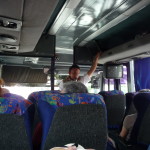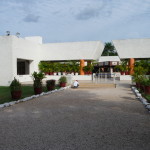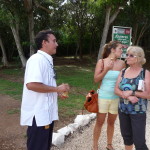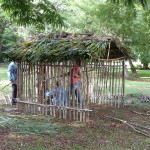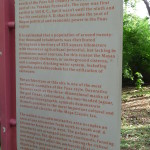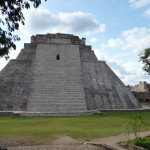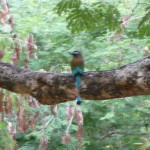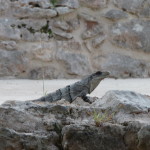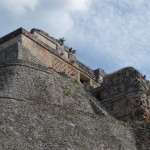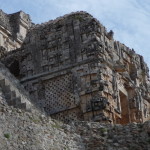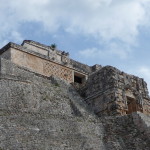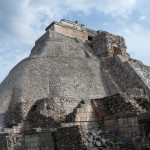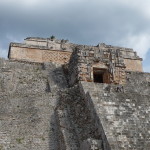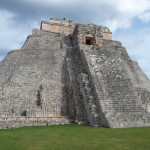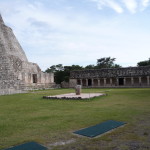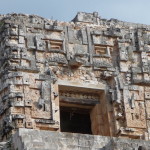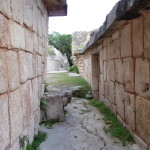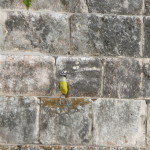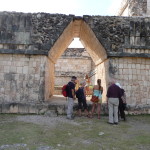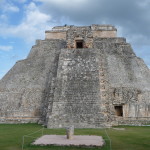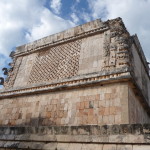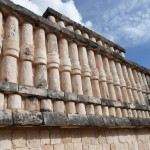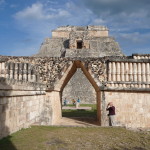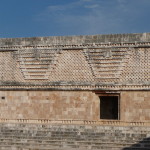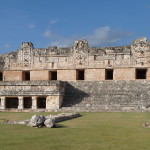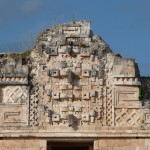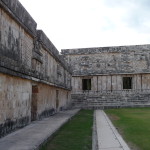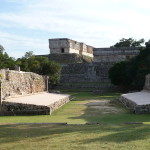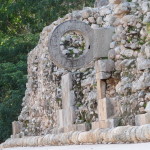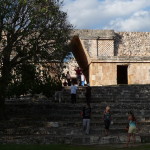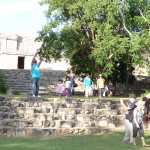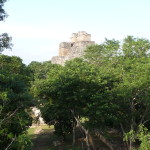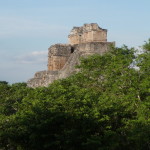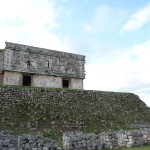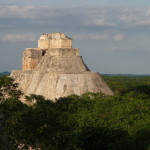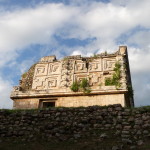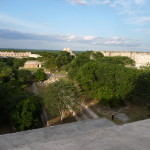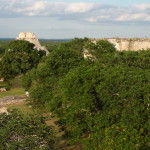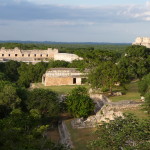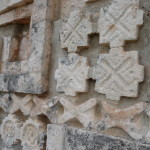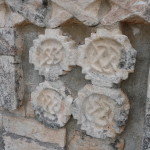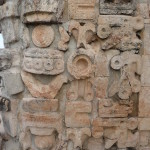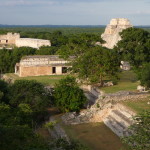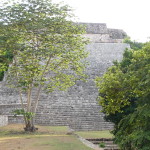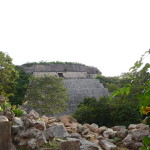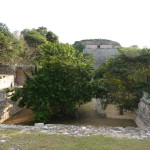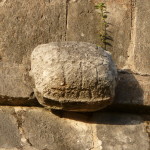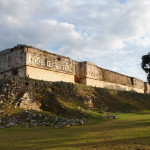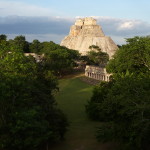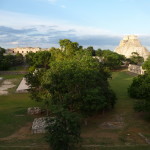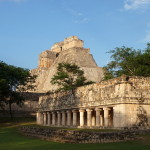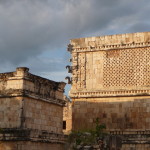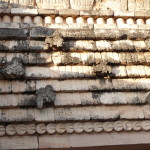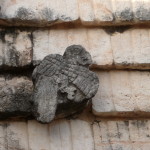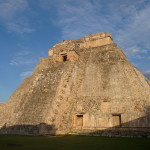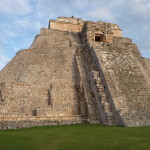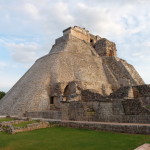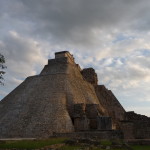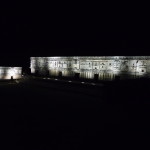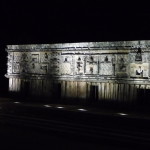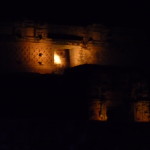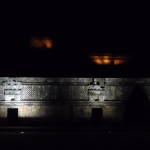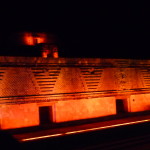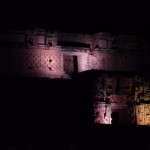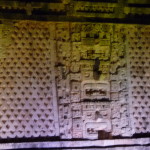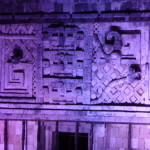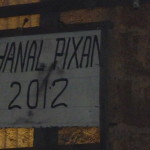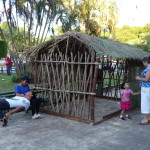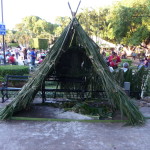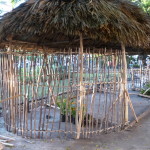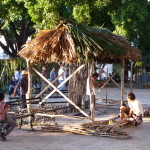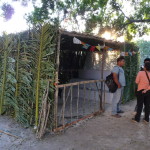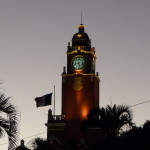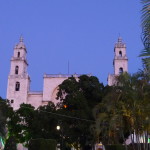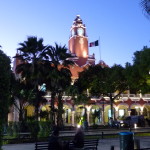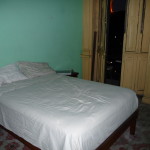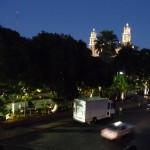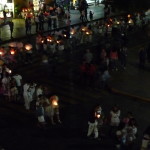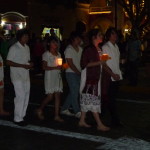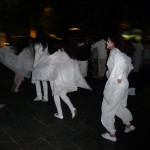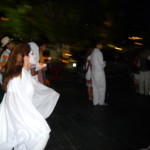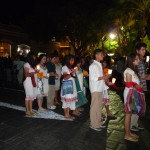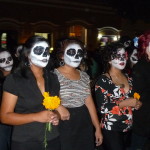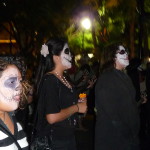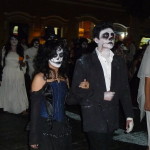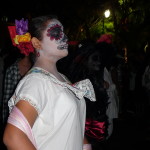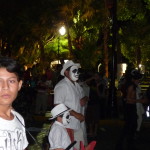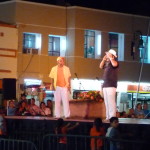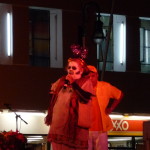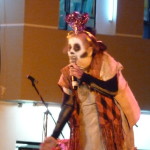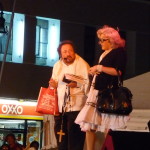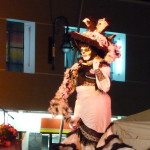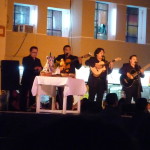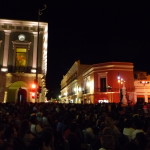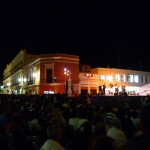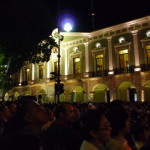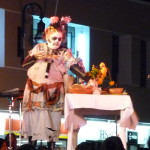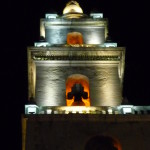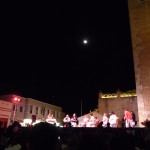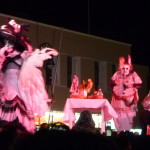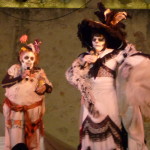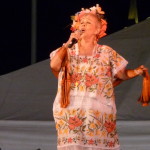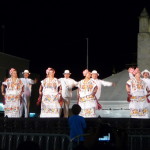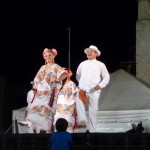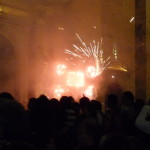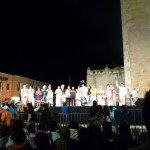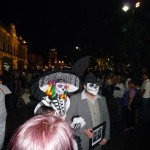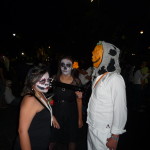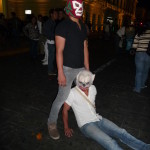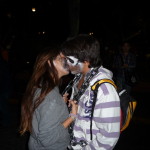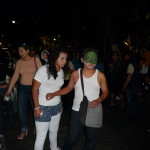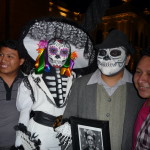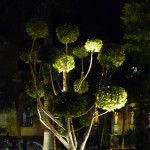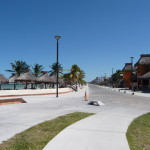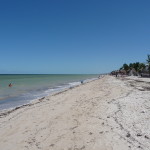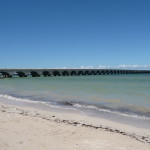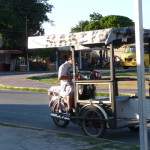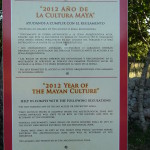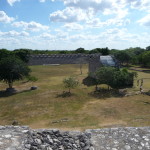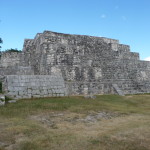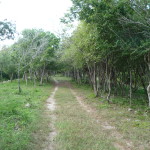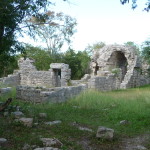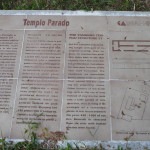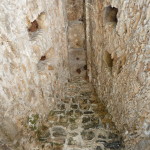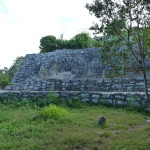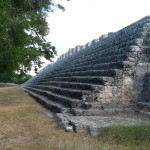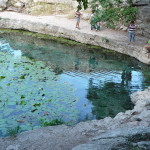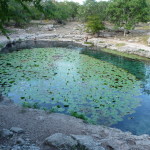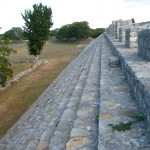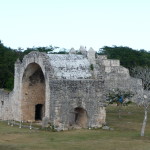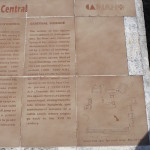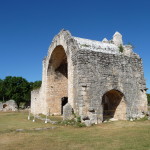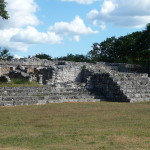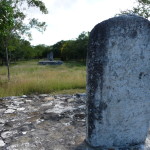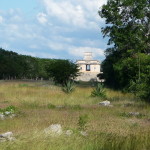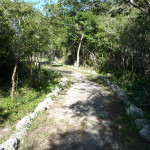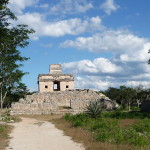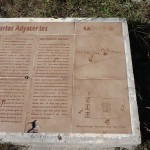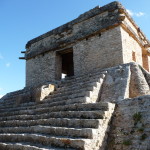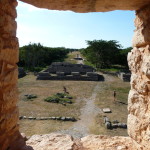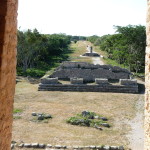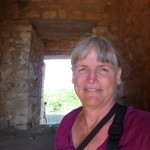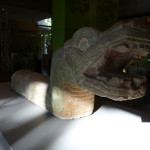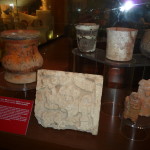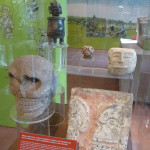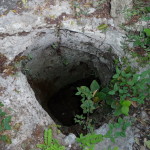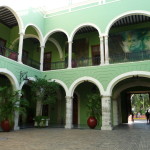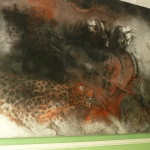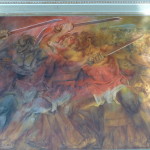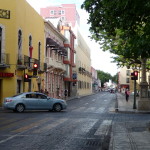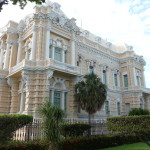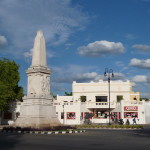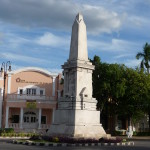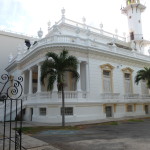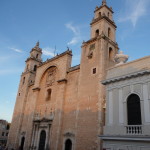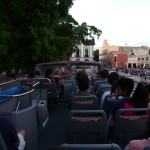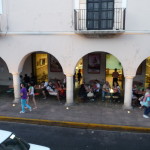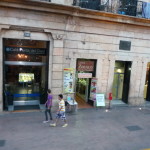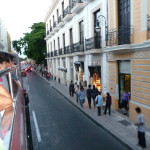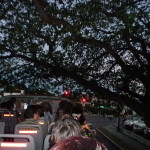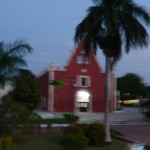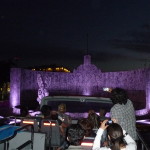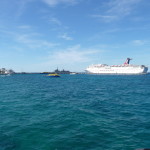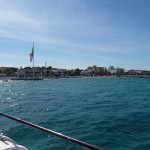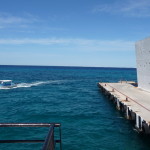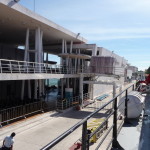At the end of October 2012, after being back in San Marcos for only two and a half weeks, I made a quick, inspired decision to fly home to Utah for a short visit. I left San Marcos on October 28, made a quick 24 hour nonstop journey (shuttles and buses) to Merida (northwestern Yucatan Peninsula), and spent several days there playing tourist. Afterward, I took another bus to Playa Del Carmen and a ferry across the channel to spend a few days with dear friends in Cozumel, after which I spent a few days visiting friends in Playa Del Carmen. Around the tenth of November, I boarded a flight destined for the United States.
This photo post mostly covers my explorations while in Merida. I had never stopped in this part of the Yucatan before, and I found a lot of satisfaction simply playing tourist for a while.
As usual, the photos in this post are thumbnail images. Please click on any photo to enlarge it. The thumbnails leave much to be desired as far as colors and resolution – plus the thumbnails clip all of the edges. I use thumbnails for the post itself, because it gives people an opportunity to get a summary glimpse without downloading huge amounts of data for the high-res photos.
CLICK ON ANY PHOTO TO ENLARGE TO HIGH RESOLUTION
Tour To Uxmal
The Mayan ruins at Uxmal have long been on my list of places that I wanted to visit. After arriving in Merida on Monday morning, October 29, I spent the rest of that day resting before purchasing a ticket for an all day tour on the following day, October 30.
Uxmal is considered to be one of the most important archaeological sites of the ancient Mayan culture. It is located 62 kilometers (about 39 miles) south of Merida. Some believe Uxmal was occupied as early as 500 B.C., but most of the major construction took place between 850 and 925 A.D., with most construction ceasing by some time in the 12th century.
This is the tour guide inside the bus that took us on the one-hour drive.
The entrance to the ruins.
My tour guide with a couple women from our group. (We split in two groups, one speaking English, and the other Spanish.)
This little hut is being built by the entrance trail. It is part of the “Dia de los Muertos” (Day of the dead) celebration that begins tomorrow.
If you click and enlarge this photo, and if you are interested, you can read many details about Uxmal.
A beautiful pyramid (sorry, I don’t remember the name). It is located at the start of the tour. There are many photos of this pyramid in my following collection.
A sampling of the beautiful wildlife.
Just popping up his head to say “hi”.
Looking up from the corner of the large pyramid.
Close-up of some of the beautiful stonework in this pyramid.
And another similar view.
Same pyramid, yet another angle.
View from a more frontal angle.
Same, from further away.
This is the plaza in front of this pyramid.
Close-up of stone-art near top of the pyramid.
Looking down a pathway toward the next site, looking at the large rocks used to build these walls.
A little yellow bird says “hola, don’t worry, be happy,” as we take in the sites.
The arches at Uxmal are of a very different construction, more angular and steep.
Another view of the same pyramid.
Uxmal is famous for the intricate stone patterns in the walls.
Very unique architecture is found here.
Another angular arch.
More intricate patterns in the stone.
Part of the inner courtyard in another section of Uxmal. Tonight, I will be watching a light show from this location (up at the top of the steps).
More of the amazing ancient art.
Another part of the same courtyard complex.
In the foreground is a Mayan Ball court.
At the ball court, this ring with the hole in it is where the ball was supposedly supposed to pass. No one knows the rules, but it is believed that the ball could not be touched with the hands, and it was quite heavy.
Enjoying the shady steps by another tall, steep arch.
More hanging around waiting to move on.
From a different part of the park, looking back at the big pyramid.
Same, zoomed in a little closer.
Part of another structure.
Yet another photo looking back at the big pyramid. You can see how flat this area of the Yucatan is.
Another interesting stone face.
From the top of a pyramid, looking across the complex. If you look close, the big pyramid is in the distant center (slightly left). Left of that, this is the open courtyard where I will view the light show this evening.
Another view with the big pyramid upper, left, center.
Similar, zoomed-in view. Big pyramid top right, Large courtyard upper left.
This type of stone artwork is all over Uxmal. It is beautiful.
Another view across the complex, highlighted by late afternoon sun.
Looking back up at the pyramid where I was just standing. There are a lot of steps.
The same pyramid, taken from a little further away. I was up by that black opening on top.
And another similar view, taken from further away still.
This is a turtle shell (made from stone) on the side of one of the temples.
Looking up at another beautiful structure.
Another view of the big temple in the late afternoon sun.
Sorry, I couldn’t resist taking more similar photos. The sun lighting was so beautiful.
Another beautiful view of a small temple in the foreground and the big temple in the back.
If you look closely, you can see the hook-shaped stones sticking out of the corner of this building. This is quite common here.
And these are bird-shaped rocks embedded in the side of this wall.
Close-up of one of the birds.
Another photo I could not resist … loving the blue sky and the late afternoon sun.
Still obsessed with the big pyramid and the afternoon lighting.
Yet another from a different angle.
And another as the clouds move in.
This and many of the following are taken during the night-time light show. I am seated on the steps inside a large courtyard surrounded by beautiful ancient buildings.
Pink Flamingos
On Wednesday, October 31, I embarked on an all day tour to the town of Celestun (a small town of about 6000 people during non-tourist season). It is a small fishing town almost due west of Merida, situated on the western edge of the Yucatan peninsula, near the northwest corner.
I went on a tour here because there is a Flamingo reserve very near. How I wish I had photos to show. I was not expecting much, but when I saw the beautiful pink flamingos face to face, they were gorgeous.
Sadly, I accidently left my camera at the hostel. I met a friend on the trip, and she promised to email me her photos, but she never did.
Hanal Pixan
Hanal Pixan (pronounced hah-nawl pee-shawn) is the Mayan name of the local celebration that corresponds with the “Dia de los Muertos” festivals held throughout many parts of Mexico. The festivities begin on October 31 and end on November 2, but here in Merida, it appears that most of it ended on the night of October 31.
This is not “Halloween” — it is actually quite different. The locals paint their faces in skeleton-like ways etc…, dressing up in fun costumes etc., but in reality, they are celebrating their deceased family members. Supposedly one night is to celebrate deceased ancestors, and another to honor the children.
I missed most of the daytime festivities in the main town square because I was in Celestun at the flamingo reserve. I was quite surprised when we returned home to find that most of the festival had been dismantled by evening.
A sign hanging on the local cathedral.
This is one of the many booths that were erected all over the town square. I understand that during the day, these booths were filled with festive activities. Now, all that is left is a shell — and these are rapidly being dismantled as evening approaches.
Another booth (at least what is left of it).
Another that is rapidly disappearing.
These young men are in the middle of tearing this one down.
And another that is a little more intact. I wish I had been around to enjoy the activities, but I also really enjoyed the flamingos.
Late evening view of the clock tower above the town square (zocalo).
Late evening view of the cathedral as taken from the tree-filled town plaza.
Another view of the clock tower. I believe it is part of a government building (but cannot remember).
This is a view of my bedroom as taken from the town square. My hostel is upstairs, one of the two middle doors (on the upper portion with four doors). I could sit on my balcony and look at the nighttime activities below.
Inside my simple (but comfortable) room. The doors in the background open to the town zocalo below.
Evening view from my balcony, looking toward the cathedral.
Evening view from my balcony, looking toward the clock tower.
I became quite intrigued when a parade began walking below my balcony. I first took a few photos from the balcony itself, and then rain downstairs to follow the festivities.
Some of the parade walkers.
More of the parade.
And another.
It looks as if this parade is for anyone who wishes to participate.
This face painting is very typical for Hanal Pixan (and for Day of the Dead in other parts of Mexico).
More painted faces in the parade.
It looks quite “eerie” but it is all in celebration of dead ancestors.
And this one is a little more festive, with a few colors …
This father and son are just wearing masks.
Soon, I found myself in the street, directly in front of the cathedral. This “coffin” is being pulled by a real horse. Just to my left, I notice that a crowd is forming at a large outdoor stage.
I watched most of the show. It was all in Spanish, but I understood a great deal. It was actually quite humorous, and I found it to be a very educational reenactment of a typical “Hanal Pixan” celebration in a normal family home.
This woman, playing the role of the dead grandmother, was a real hoot.
I was zooming in from far away, so it is hard to get a clearly focused photo.
A couple of local celebrities playing the parts of family members.
And a man, playing the role of another eccentric deceased grandmother.
Mixed in with the humorous antics were several musical performances.
This is a view of some of the outdoor crowd gathered to participate. If you click on this photo to see the high-res version, you can see a lot more detail. The stage is on the right (not really visible in this trimmed thumbnail image).
You can see more of the crowd, and the stage, in this image. You can see here that I was quite a distance back. Eventually, I worked my way closer and found a metal chair to sit in.
More of the crowd.
As part of the celebration, the living family places a table in their room, and fills it with traditional foods — foods that are to be eaten by their ancestors. In this photo, the deceased grandmother is hamming it up while snacking on the goodies.
Looking up at the cathedral bell tower with the night lights.
The full moon lighting up the stage.
Just another stage scene from the silly antics …
And another. Sorry they are so blurry.
A local singer entertaining the crowd.
And a group of traditional dancers.
More of the dancers.
They set off some fireworks at the end. This is right in front of the cathedral, not far from the crowd.
Grand finale at the stage play.
Mingling in the crowd after the show. Just in front of the cathedral were many people dressed up and posing for cameras.
These people are more like Halloween … blending local and western traditions.
And so are these. This is not typical of the Hanal Pixan traditions.
Looks like she has her man in chains.
This area had some interesting people mulling about.
One of my favorites. This is very traditional.
One last cool nighttime photo as I walk across the plaza back to my hotel room.
Dzibilchaltun Or Bust
On Thursday, November 1, 2012, I set off on a new adventure. Rather than purchase a tour (which I couldn’t find anyway) I decided to set off on my own, relying only on public transportation, in search of the small ruins of Dzibilchaltun (Dzee-beel-chall-TUNE). First, I followed directions given to me by a woman at the hostel where I was staying. She told me I could find a collectivo (collective taxi) in a certain park about fifteen minutes away. After asking every taxi driver in the area and being given the run around, I found a small bus station advertising that their bus went to Dzibilchaltun. I purchased a ticket, specifically verifying that the bus I was boarding would take me where I wanted to go.
After getting out on the open road, I discovered on my map that Dzibilchaltun is off the main road, and the driver was not making any stops. Apparently I was on a direct bus to Progresso, straight north of Merida, on the beaches of the Yucatan at the northern shores, again near the northwest corner of the Yucatan.
I had been wanting to visit Progresso anyway, so I enjoyed a short visit before again setting out on my relentless quest.
The road that follows the beachfront of Progresso. This town is a little larger than Celestun, and seems more oriented toward tourists.
The beautiful beach. It was a little cold and windy, I didn’t have my swimsuit, and I was told by an information place that if I still wanted to go to Dzibilchaltun, I would have to hurry.
Progresso is famous for this long pier that goes way out in the ocean until it reaches deeper waters, making it possible for a little shipping commerce.
Finally, I returned to the small bus station in Progresso. I was told that I had to go all the way back to Merida and start over in my quest. There are no local transports that go to Dzibilchaltun.
After walking around downtown Merida for nearly an hour, I found a collectivo driver who told me he stops in a small town near Dzibilchaltun, and that from there I could catch a taxi. On blind trust, I boarded the small minivan.
When dropping me off, the collectivo driver was kind enough to locate me one of these motorcycle taxis. For ten pesos (less than a dollar) I took a ten minute ride to the parking lot by the entrance to Dzibilchaltun.
Note: if you look in the background, you can see a yellow bus on the right. This is the actual bus that I took back to Merida later in the day. (This photo was actually taken on my way home.)
The signs at the entrance to the park.
These ruins are smaller and less well known. This is the central plaza area of the ruins.
One of the small structures.
Exploring a trail to see where it goes.
A small structure at the end of the trail above.
Not sure which temple this sign is referring to.
I believe this is the inside of the “Templo Parado” referred to in the previous plaque.
An outside view of the same.
The steps of another pyramid-like structure.
A small pond (cenote?) in the middle of the ruin complex.
Different view of same pond.
From the top of one small structure.
A church-like building in the middle of the central plaza area.
A sign with map and details of this “central square” area.
Another view of the little church-like building.
More of these old ruins.
I don’t remember the name of this. If you look closely, you can see the foreground area and two similar ones trailing off in the distance, all lined up with each other.
I spent more than an hour hanging out and meditating in this little temple at one remote end of the park.
But first, I took a side trail that supposedly led to more ruins. I came up empty, finding nothing.
More of the little temple where I meditated.
A plaque describing this area. This is part of a group of structures called “The Seven Dolls.”
Moving closer.
Climbing the steps to go inside.
Inside, looking out toward the center of Dzibilchaltun.
Similar view.
Me … inside.
Just before closing time, I spent a few minutes in a museum. The guard had to unlock the doors to let me in. He was already preparing to go home.
I passed a big hole in the ground as I walked back toward the entrance. From there, I took a fifteen minute walk back to the main road, waited until I could flag down a motorcycle taxi, returned to the small town where I had been dropped off by the collectivo, and found a large bus that took me back to Merida.
Around Merida
On Friday, November 2, 2012, I took a day off from tours outside of Merida, and instead spent a little time exploring in Merida itself.
This beautiful building is an old government building, just off the central plaza, turned into a museum. It just so happens that today was free admittance, so I took a gander inside.
Many of the walls were painted with beautiful murals.
More of the murals.
A typical street, looking north from the northwest corner of the central zocalo.
I took a walking tour that took me through a really ritzy area of town. This is one of the beautiful mansions I saw from the street.
A monument along that same street.
Another view of the same monument.
Another beautiful mansion along this street.
The front of the cathedral in the center of town.
In the evening, I dropped my resistance and paid for a two-hour bus tour around Merida. It got dark quickly — too dark for most photos. The few I did took turned out very blurry.
Driving past an outdoor restaurant as we leave the central square.
Passing in front of my hostel. (You can see the sign “Hostal Zocalo” in the center doorway. My room has a balcony just upstairs.
Driving away from the city center.
One of the most fascinating things about this tour is that we were on the top of a double-decker bus with an open roof … and we continually passed underneath huge low-hanging trees, often having to duck. I got scraped a few times when I wasn’t paying attention.
A very old church. It is blurry because of fast driving and dark lighting conditions.
A beautiful landmark in the center of a huge round about (traffic circle).
On To Cozumel
On Saturday, November 3, 2012, I took a bus across the Yucatan from Merida to Playa Del Carmen. I had hoped to spend a little time with my friend Rafael, but did not connect with him in time, so I then went straight to Cozumel to connect with a few friends there.
A view of a cruise ship as my ferry nears the island of Cozumel (in the Caribbean, twelve miles out from Playa Del Carmen, which is on the northeast corner of the Yucatan).
Taken from the deck of my ferry, approaching the Cozumel shoreline.
A view from the Cozumel ferry terminal, looking back at the twelve-mile gap between here and Playa Del Carmen. You can barely see Playa Del Carmen in the distance.
Looking from the deck of my ferry down at the terminal as we dock.
I spent a few days here, exploring my old stomping grounds and visiting friends … especially Eduardo. Then I returned to Playa Del Carmen where I spent two nights. I was successful in finally connecting with Rafael where I got to visit with he and his sweetheart before taking another bus to Cancun where I flew back to Utah for a two-and-a-half week visit with family and friends. A future photo blog will document parts of that journey.
This ends this posting. I am a little slow catching up with my blog right now. I have been doing a lot of dental work here in San Marcos, and tomorrow I go in for another root canal. I will get back to the photos when I have more time and energy.
Copyright © 2013 by Brenda Larsen, All Rights Reserved
